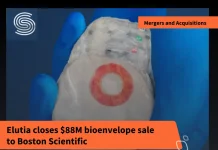- The clearance allows the platform to host artificial intelligence algorithms that aid in disease risk prevention.
- It also expands the population that can be managed by the software.
Huma Therapeutics announced that it has received class II clearance from the FDA for its disease management platform, which facilitates data collection from patients for self-management or remote assessment by health care providers.
The Software as Medical Device (SaMD) platform powers digital pathways for patient data collection from digital screenings, remote patient monitoring systems, companion apps, risk assessment tools, algorithms and dose calculators, according to a company press release.
The clearance “allows us to drive clinical decision-making, embed into the technology clinical decision support algorithms, and at the same time give clinical advice to the patients,” Mert Aral, MD, the chief medical officer at Huma, told Healio.
According to the company, the new, elevated clearance level enables providers to use the SaDM platform to monitor patients of any age with any condition. It can connect with multiple third-party devices like smart inhalers, heart rate monitors and blood sugar monitors.
“Now we can deploy our technologies for pediatric patients and pregnant patients. It’s multi-condition, and it’s for all patients,” Aral said. “What that means for primary care physicians is that they don’t have to work with multiple point technologies and different digital solutions. They can work with one software technology and configure that solution for different disease areas.”
RELATED: Human Xtensions wins FDA 510(K) clearance for the HandX® Self-Righting Needle Holder
One of the key benefits of the platform, Aral said, is that it enables practitioners to implement guideline-directed care more effectively amid “discrepancies in quality of care … so that we have near real-time understanding of what’s happening to any given patient.”
The platform also hosts AI algorithms, which are being increasingly used in health care, that utilize automated data to support disease risk diagnosis, prevention and prognosis.
“In the way that we implement these solutions in the primary care setting, there’s usually a nurse navigator who is monitoring, let’s say, 50 patients,” Aral said. “But we can get that nurse navigator to monitor 500 patients with the right algorithms embedded into the technology, which prompts that nurse to take action based on the data coming from the patient and based on the guidelines. Care immediately becomes more proactive, and you’re able to implement best practices in a much more scalable way.”
Aral noted that in March, Huma achieved a similar regulatory status for its software platform in the European Union, making it currently the only disease agnostic platform able to offer prompts to clinical decision-making on both continents. The company is hoping that other commercial groups add disease-specific algorithms to its platform because having the initial class II clearance will speed regulatory approval.
He said this type of technology has “a great promise to improve patient outcomes.”
“We have already demonstrated that for heart failure patients,” Aral said. “The national average for time to treatment optimization is about 6 to 8 months. With this technology, we were able to reduce that to about 6 weeks. That’s a huge impact. We know that if the patients are on the optimized doses on the right medications, the outcomes are better.”






